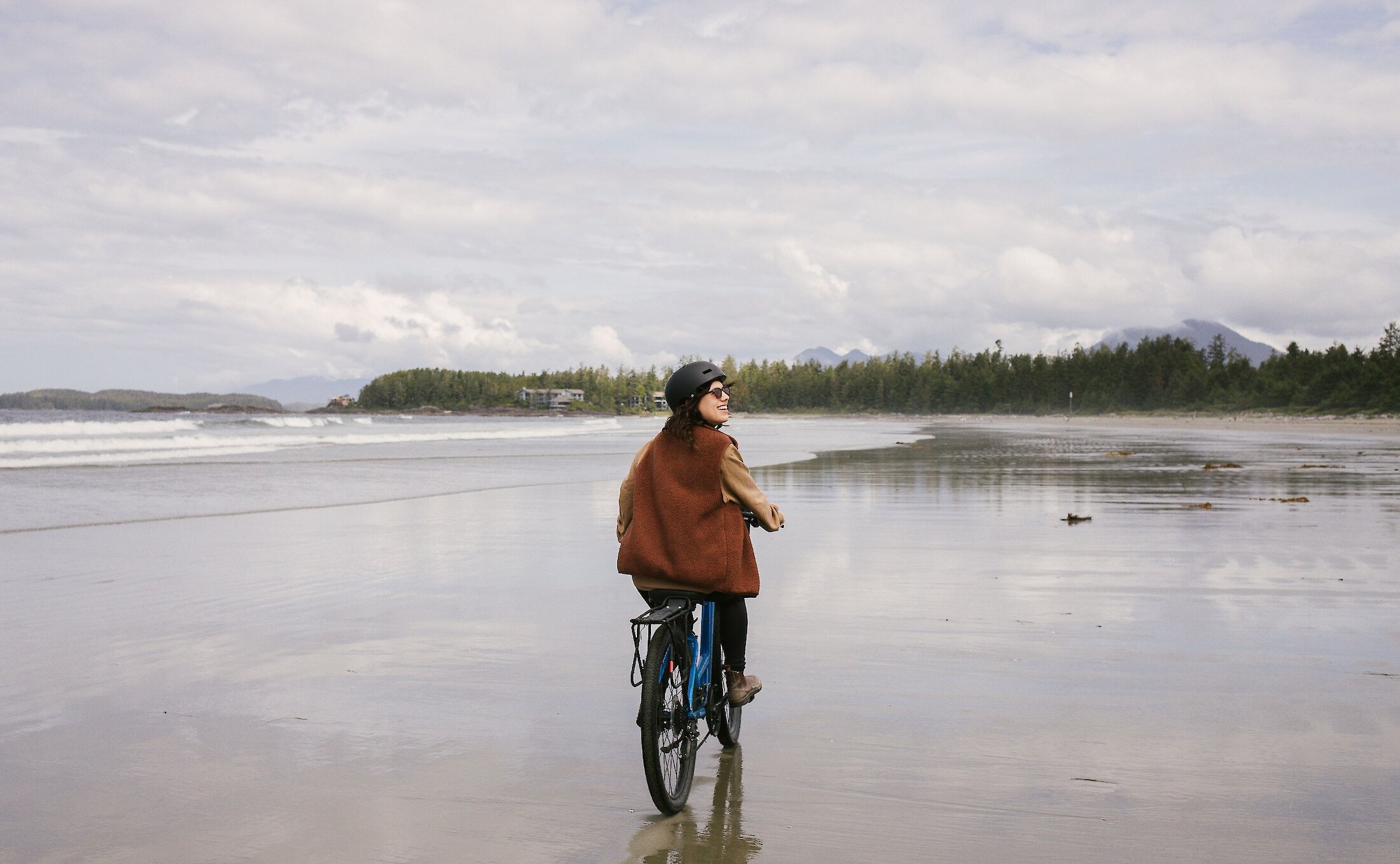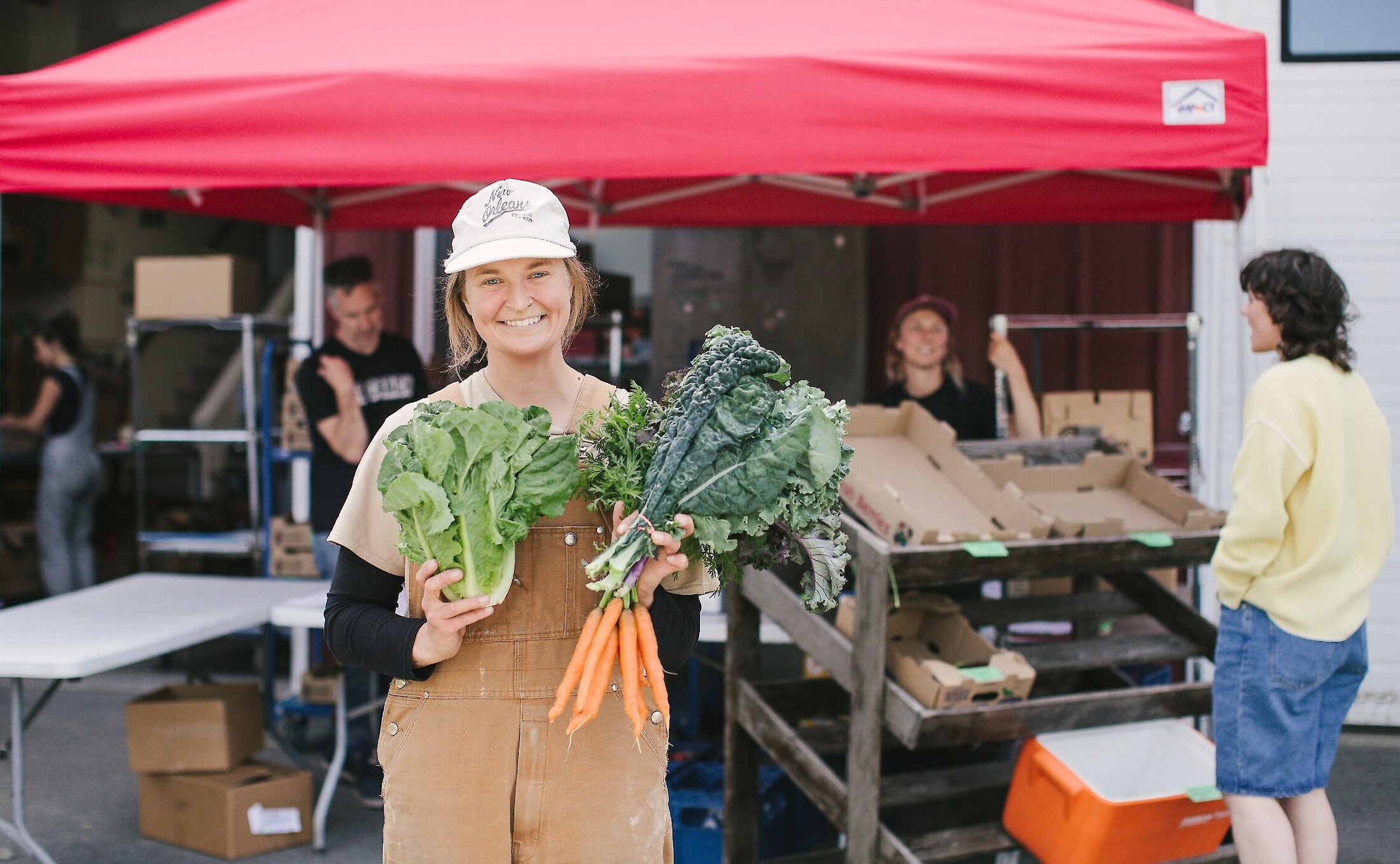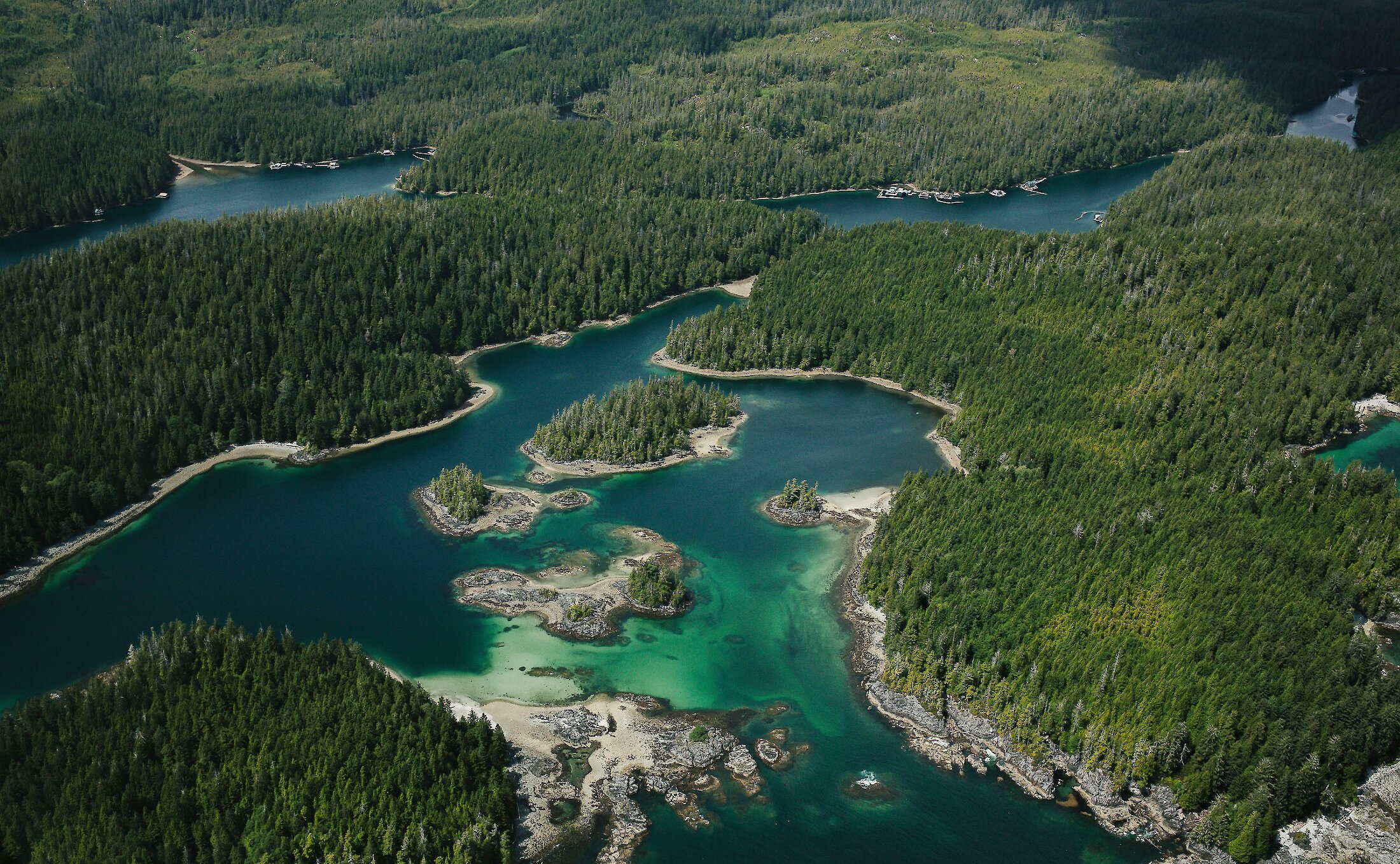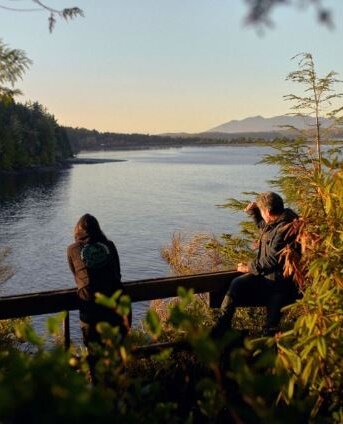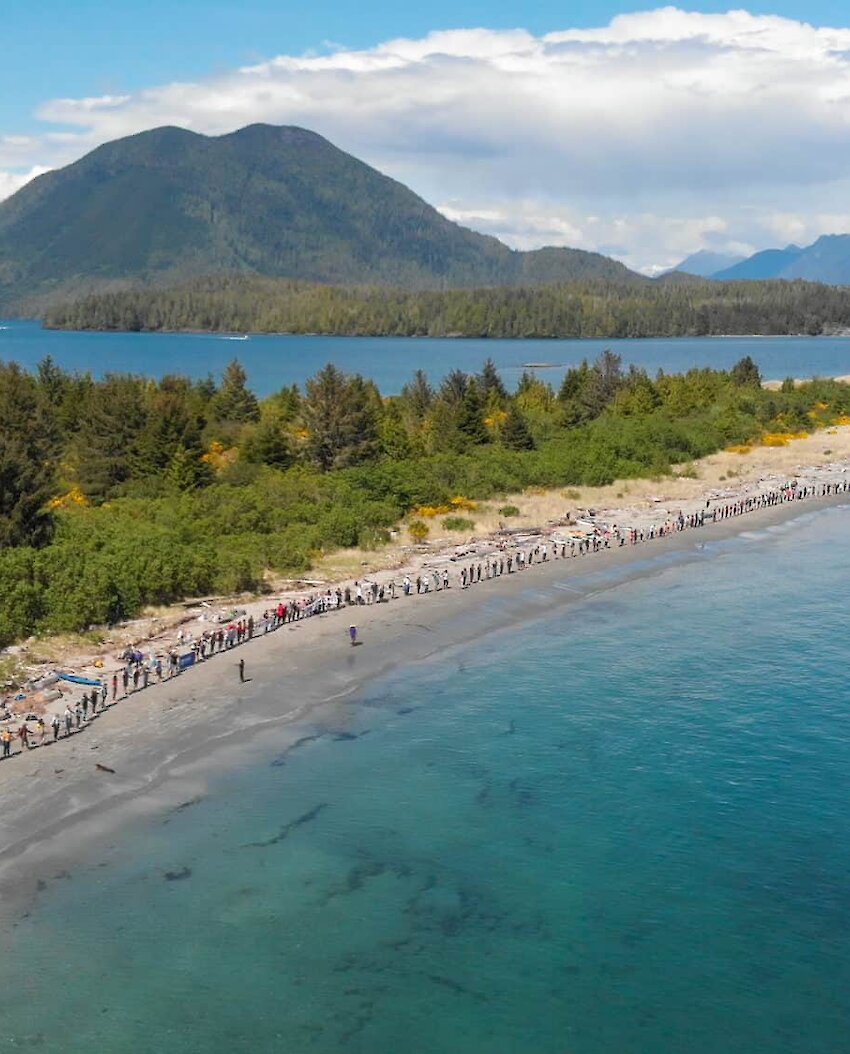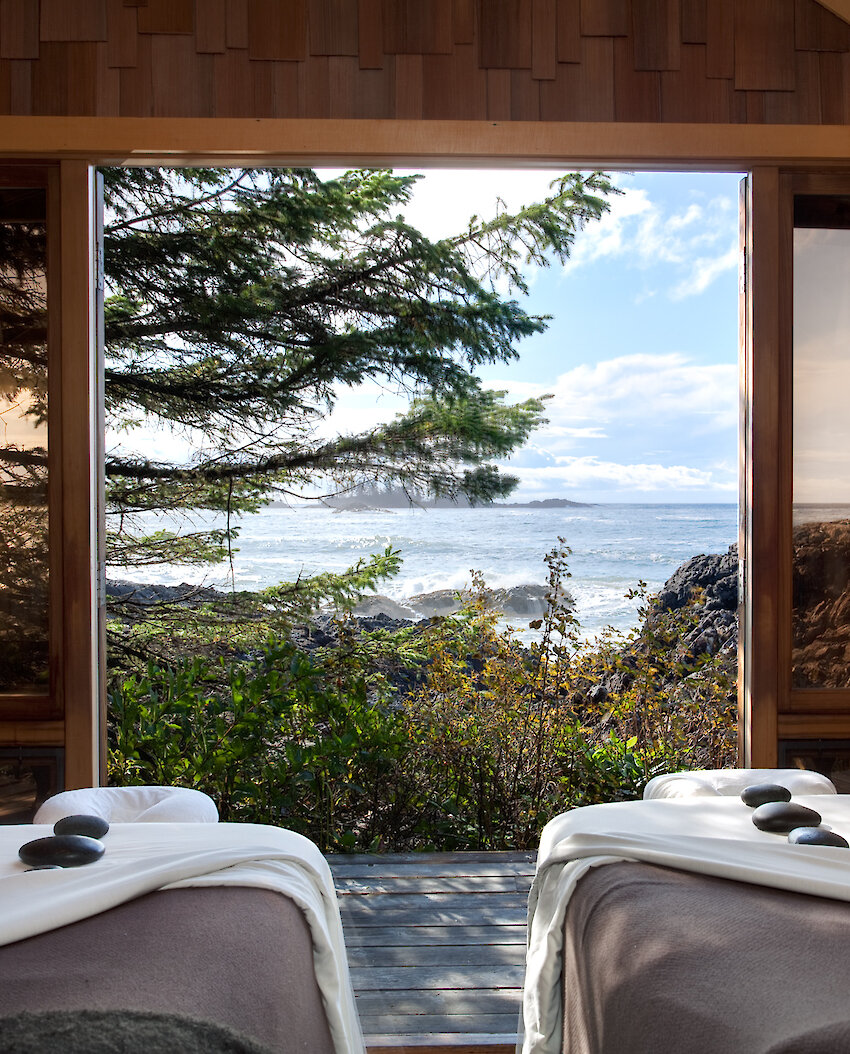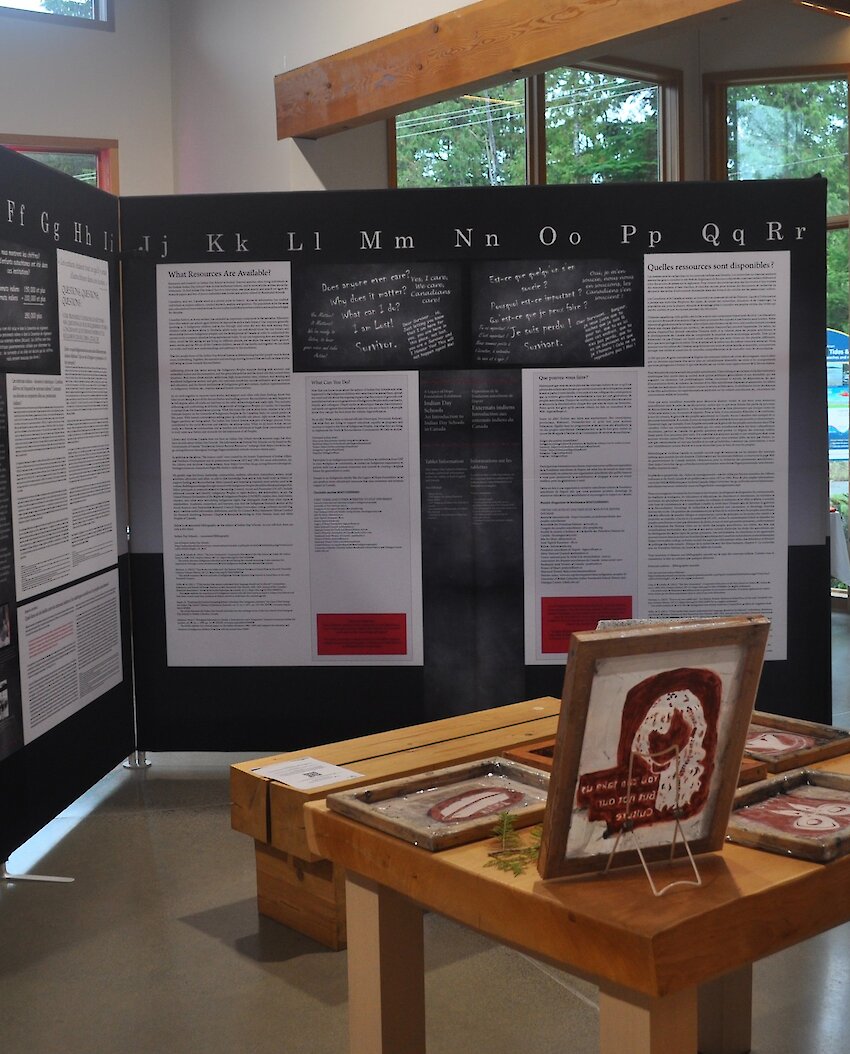Treading Intentionally in n̓ačiqs | Tofino
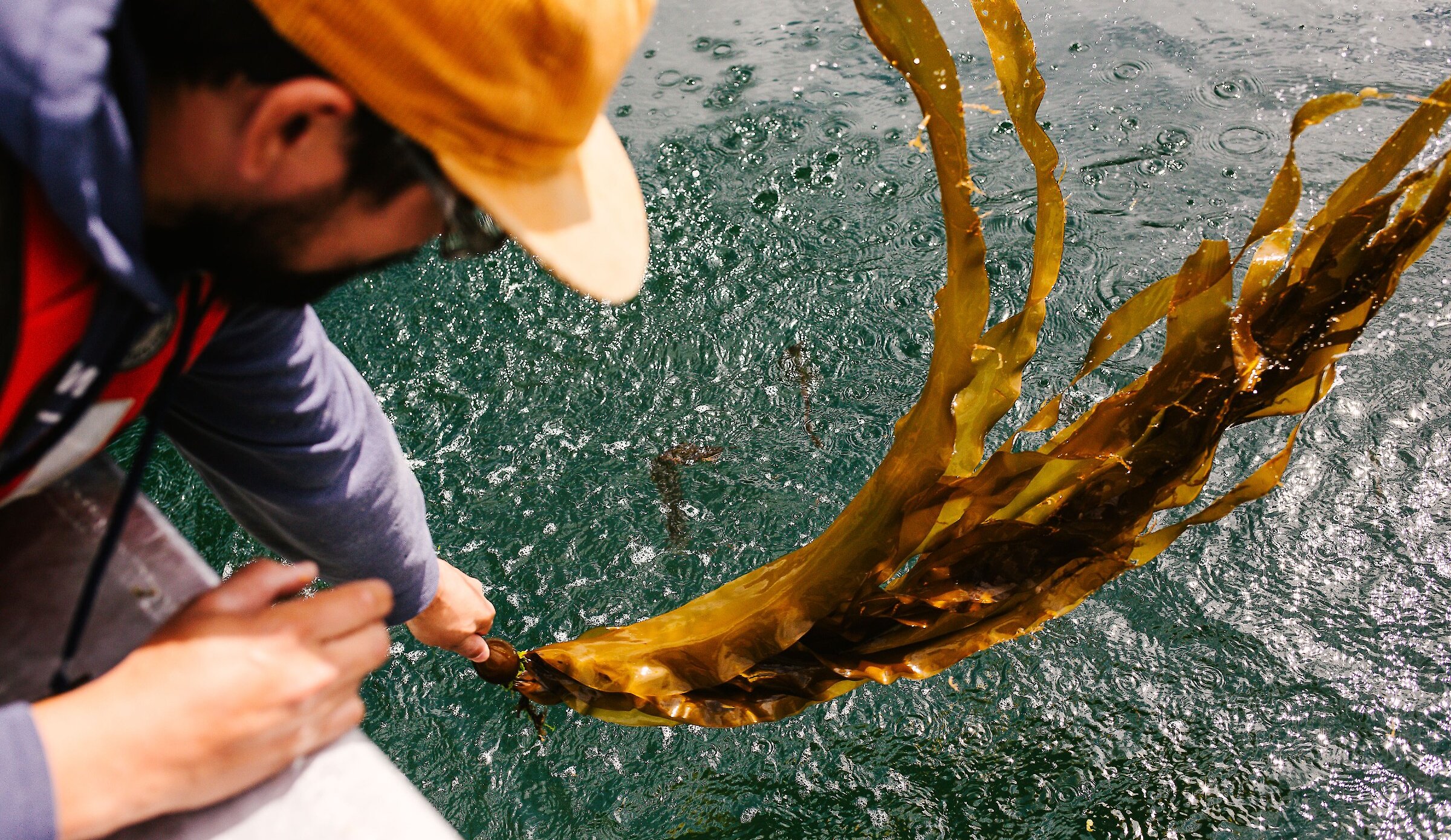
Stevie Dennis harvesting bull kelp for Naas Foods
Asalah Youssef
Sinking my feet into the sand on the expansive beaches, meandering through lush forests, and catching waves all year long are strong pulls that keep me returning year after year to the lands and waters of n̓ačiqs (Tofino).
By Asalah Youssef
Visits as of late have instilled the importance of intentionally connecting in a deeper way, which not only makes for a more enriching visit but also contributes to making your time in this ethereal place more reciprocal. Weaved into this story are a handful of field notes from my many journeys and conversations. My most recent visit etched especially fond and meaningful memories through an abundance of activities and experiences: getting hands-on learning on all things kelp farming with Naas Foods, hiking up Lone Cone on Meares Island and cruising by bike on the sandy shores.
My sister and I set off for our journey to the island by soaring over the coast with Harbour Air, catching glimpses of waves crashing and getting a bird’s-eye view of the way the forest line meets the ocean. Leaving our car at home made this experience extra special, as it encouraged us to seek out alternative ways to move around the peninsula, such as by bike, Evo Car Share Return and bus! Before making our way to Tofino, though, we pondered a few intentions for our visit, a practice I have prioritized doing before any visit to a place.
Before your visit:
Before winding through the rainforest roads or soaring over the rugged coast, I invite you to ponder and set a few intentions for your visit to these lands to commence your trip mindfully from the get-go:
- Acknowledge and walk with understanding of the unceded land you’re visiting as a guest.
Tofino (n̓ačiqs) is situated on the tip of the Esowista Peninsula, within the traditional ḥaḥuułi (territory) of the ƛaʔuukʷiʔatḥ (Tla-o-qui-aht) First Nation and their Tribal Parks. Learning more about the peoples who have lived and stewarded these lands and waters for millennia is integral. I invite you to read through this piece to gain more understanding of the rich history and current ways of life of the Tla-o-qui-aht.
- Read and sign the ʔiisaak Pledge
The ʔiisaak Pledge (which means to observe, appreciate and act accordingly / to practice respect) is a collection of teachings and protocols that guide visitors to travel with respect for the lands and peoples in n̓ačiqs. Visit this page to sign the Pledge.
- Choosing an accommodation that is Indigenous-owned or supports Tla-o-qui-aht Tribal Parks
We stayed at the magical Tin Win Resort during our time in n̓ačiqs. Our mornings were spent rising with the sun, stepping out from our patio to go for an early stroll on tinwis Beach (MacKenzie Beach) and evenings gazing at the golden sunsets that colour the cove. Staying at Indigenous-owned accommodations such as Tin Wis Resort or Tsawaak RV Resort & Campground is a tangible way to support Tla-o-qui-aht communities and their work in revitalizing cultural practices. There are also a plethora of accommodations, restaurants and gift shop options that are Tla-o-qui-aht Tribal Park Allied businesses (businesses that have agreed to support the Tribal Parks by collecting a 1% Ecosystem Service Fee on behalf of the Tla-o-qui-aht First Nation). The full list of businesses and accommodations that are allies can be found here.
During your visit:
Time in n̓ačiqs offers plentiful opportunity to sink a little deeper into place. While we were there, we joined guided tours, community gatherings, participated in activities that connected us to Clayoquot Sound, ate at restaurants and shopped at local businesses that are committed to stewardship. There are endless ways to create your visit in a way that both feels exciting for you and has a positive impact on the place, but here are a few ideas:
Immerse yourself in Indigenous Tourism
Learn more about Nuu-chah-nulth history and ways of knowing and being through participating in and supporting Indigenous experiences, such as through Ahous Adventures, Spirit Eagle Experiences, visiting the Roy Henry Vickers Gallery or Tofino Clayoquot Heritage Museum.
I recently hiked up Lone Cone on Meares Island with Ahous Adventures and was enamoured by the towering old growth forest all the way up the hillside. Equally enchanting were the traditional teachings shared by Anna Atleo as we hiked through huckleberries and paused under cedar canopies. While this is typically a self-guided hike, our hike was a special guided hike in honour of Indigenous Peoples Day.
Engage in regenerative + sustainable activities
- Join an ocean cleanup with Surfrider Pacific Rim. Every Wednesday in July and August, Tourism Tofino hosts a free drop-in cleanup at various beaches called ‘Washed Up Wednesdays’ with support from Surfrider Pacific Rim. It’s a fun way to meet locals, participate in stewardship and spend time on the beach giving back during your visit! Learn more about how to get involved with cleanups and other events here.
- Get around via alternative modes of transport (& the more fun ones, too!). We rented bikes from Indigenous-owned T-bird E-bikes and cycled down the beaches and the multi-use path (MUP). To get from beach to beach or into town, there is a free seasonal hop-on, hop-off shuttle bus (July & August) - the Tofino Free Shuttle. There is also a year-round BC Transit bus that runs between Tofino and Ucluelet and many of the communities in between.
- Always tread lightly and leave no trace while camping or recreating around n̓ačiqs. When you visit the West Coast, the most environmentally friendly and culturally appropriate camping experience is at a designated private or public camping area. Reservations are strongly encouraged.
- Connecting more deeply to the land can look like learning about the native flora and fauna that co-exist with you as you wander the trails and beaches. Interested in learning their traditional names? Stop by the Tofino Visitor Centre to see signage for native plant species in both Nuu-chah-nulth and English.
- Support local food systems through the Tofino Ucluelet Culinary Guild (TUCG). TUCG has a market stand at the Tofino Market every Saturday from 10 AM - 2 PM until the Thanksgiving long weekend in October. If you are staying for an extended visit, it's worth becoming a member and ordering your bounty online (for Thursday pickup). You can get a seasonal box of produce and goods that are locally sourced or made on the island and the Lower Mainland to nourish you!
- Be mindful of your environmental impact. One of my favourite things to do in Tofino is relishing and lingering in a coffee shop pre- or post-surf. While you do so, don’t forget to bring your own mug!
- Engage and connect with the people of n̓ačiqs through community participation. Tofino has many stewardship events and community gatherings - check the Events Calendar to see what is happening during your stay.
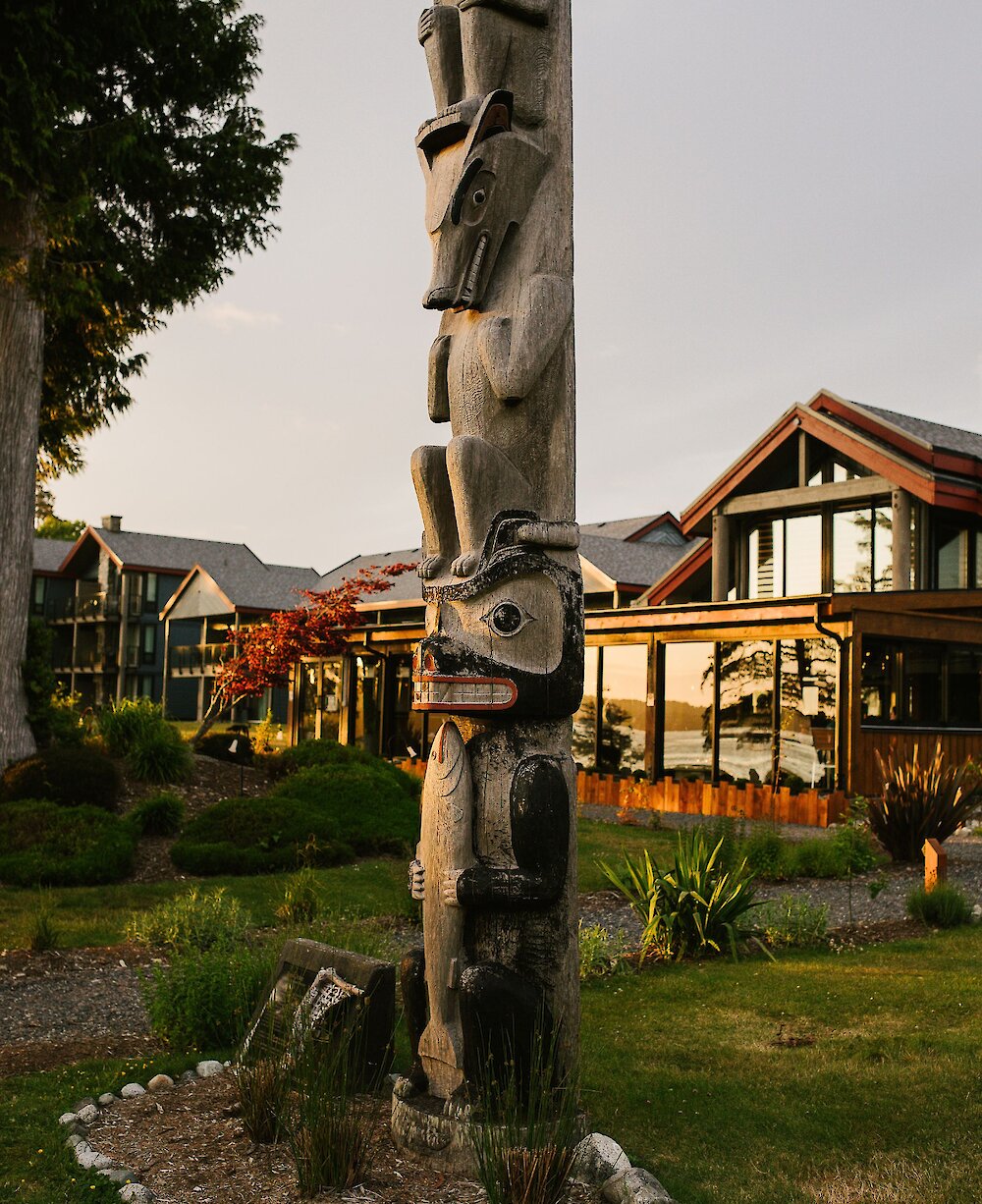
Totem pole honouring the Survivors of residential schools in front of the Tin Wis Resort
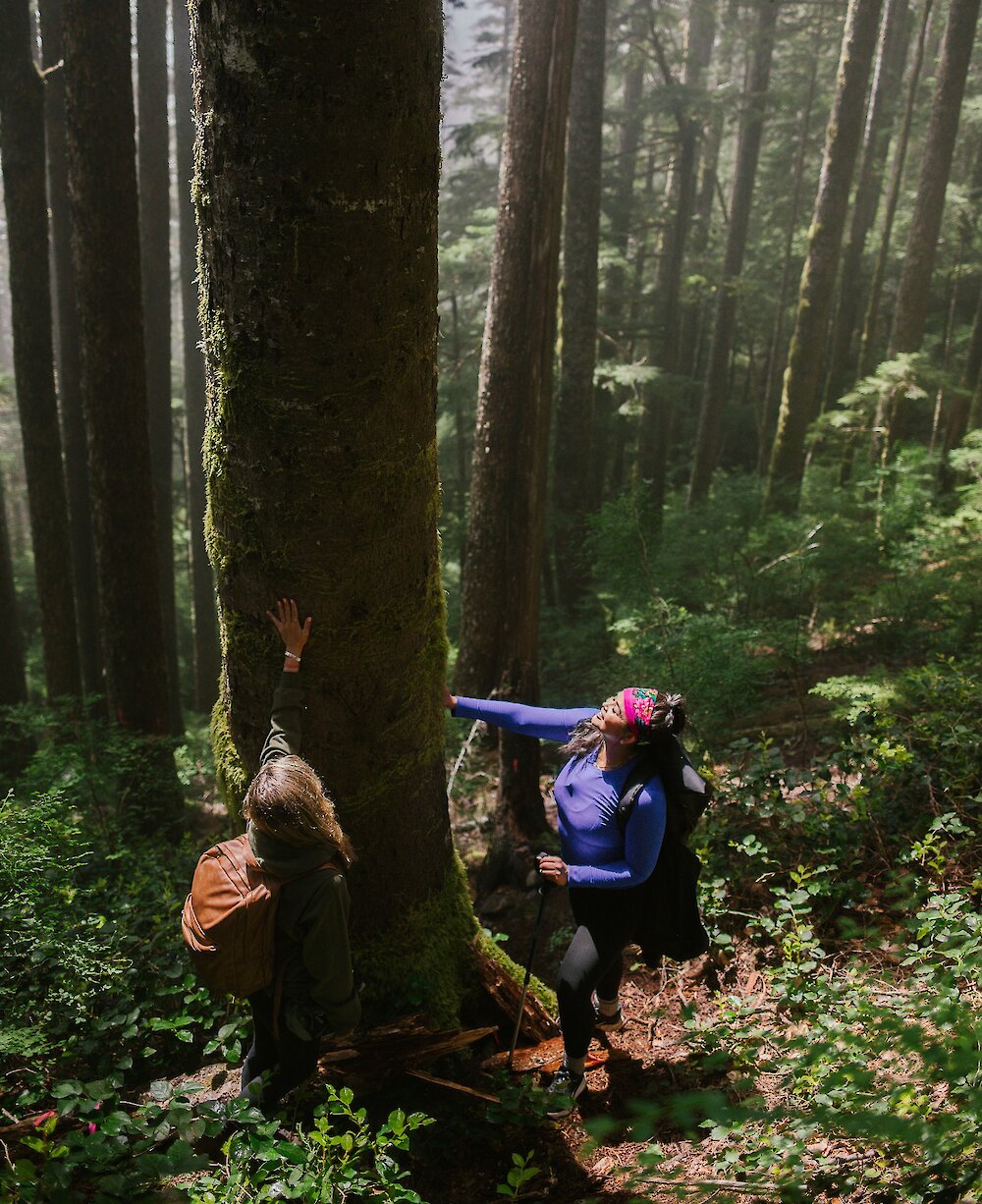
Anna Atleo (right) guided the hike up Lone Cone Trail for Indigenous Peoples Day.
Asalah Youssef
Being a thoughtful and intentional visitor not only makes for a more fulfilling visit but also deepens your relationship with the lands and the people who live there. Even if you’re in n̓ačiqs for just a short while, there is an opportunity for your presence to have a positive impact.
Going a little slower, participating in experiences that are regenerative for land and people, and moving through the visit with intention is a sweet recipe for landing a little softer on the sacred lands of n̓ačiqs.
What are some of your favourite ways to connect with n̓ačiqs?
